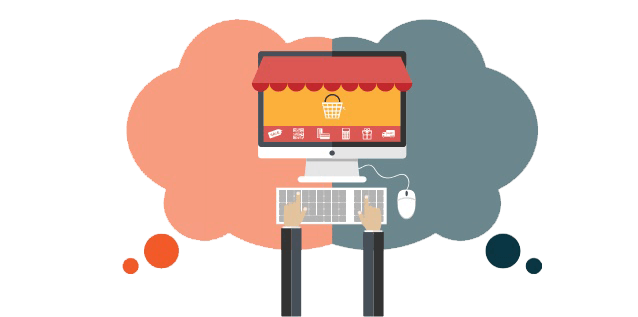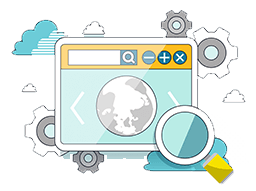
Email marketing is evolving every day. It is no more about how many emails are sent to how many subscribers. The focus has come down to quality, once marketers would rely on batch and blast technique. Although there are many who still like to flood the subscribers’ inboxes on a daily basis, the majority chunk is now working on sending personalised emails. Email segmentation and personalisation can be referred as the most viable alternative to batch and blast technique.
It is important for the subscribers to read the emails. If they are not reading, then it is hard to convince them to take the next step. And to make them read, there is a need to send out emails that align with their interests.
So, how do we do that?
Email segmentation and personalisation is the answer.
For instance, an email from Modcloth was good enough to hold its customer’s attention, and also aligned with their interests. The use of GIF in the email content scored them some more brownie points.
Apart from that, the subscribers were able to access this email from their mobile devices without facing any lag. Summing it up:
- It had all the elements that people love to browse while shopping.
- The GIF made it interesting.
- There were several CTA buttons or options that made it interesting
- They could unsubscribe easily if they wanted to.
- It was mobile optimised.
Of Course, the customers never had a one to one chat with the founder. But yes, they do a lot of shopping and browsing on their site. So, does that mean someone is sitting and tracking them? Nope. Rather, the moment the customer had signed up for their newsletter, his email address was added to a specific list based on the data shared (like date of birth, location, preferences, etc.).
Ensuring that the emails are optimised for mobiles is another mandatory aspect. There is no denial that a larger chunk of people have shifted to mobiles for almost everything: checking emails, making a purchase, browsing, listening to music, etc. So, if the emails are not mobile optimised, then there is a loss of a huge chunk of prospective subscribers. For more convincing explanation, have a look at some fascinating statistics on mobile email opens in this infographic:
The Ultimate Mobile Email Open Statistics.
Email Segmentation and Personalisation: Terminologies

It is clear that sending out bulk emails does not give a great response. Why would anyone want to open their emails and see a host of emails from god knows who! Cold emailing is off the league (unless we are convinced that our product or services are too offbeat to ignore). Here are some convincing data stating the importance of email segmentation and personalisation:
- 74% marketers agreed that targeted, personalised emails trigger more customer engagement.
- Emails that have personalised subject lines receive 26% more opens.
- Segmented and targeted emails generate 58% of all revenue.
- Sales are up by an average of 20% via personalised web experiences.
Often, marketers get confused with what email segmentation and personalisation means in reality. Janet Choi from Customer.io reveals
“There’s this huge gap between how marketers want to use more personalisation and be more relevant and what they’re actually doing.”
There are three major points of concern:
- Despite knowing that ‘batch and blast’ technique works no more, many marketers use it.
- Every marketer is aware of ’email segmentation’, yet they are unwilling to move beyond ‘active users and inactive users’.
- Personalisation is crucial for a successful campaign, and still, many marketers could go as far as “HI NAME” in their email campaigns.
“Personalisation doesn’t just mean including a person’s first name in the subject line. Executing a campaign to a highly targeted segment is one form of personalisation. Triggering emails based on inactivity is another.” ~ Jimmy Daly, Swipe File Newsletter.
The Definitions:
Email Segmentation is the process of breaking down one big list into segments based on the demographics and other details of the subscribers.
Email Personalisation is establishing a personalised connection with every individual subscriber. It is more like a one-to-one conversation where the sender gives exactly what his subscribers want, and engage them more. Email personalisation is not about adding first names. It is about sending the right email to the right person at the apt time.
Step by Step Guide to Email Segmentation and Personalisation

So we have visitors who have subscribed for our newsletters. To ensure that we send emails that will not drive away the subscribers, here are data that we will need to gather for email segmentation.
Demographics
Details like name, DOB, location, gender, etc. can be collected when the visitor is subscribing or is making a purchase. Data like these do not change frequently. Hence, these data are perfect to create email segments for personalised and automated emailing.
Preferences
When the visitor is signing up for the newsletter, we can ask them their preferences for products, services, size, the frequency of emails, etc. This way we can narrow down what the audience want. However, we must be careful in not overdoing or under-doing it. For instance, suppose there is an e-commerce company that sells premium furniture. One of the subscribers opts for dining tables in their list of preferences. Now, that does not mean the company will keep sending emails about dining tables only to that email for next six to seven months!
There is another catch here. Preferences are subjected to change. So, we must ensure that we offer the option to update or edit their preferences once in a while. We can remind the subscribers for this.
Transactional data or Recency, Frequency, Monetisation (RFM)
If there is an e-commerce platform, Behavioral they will have a lot of transactional data that can be utilised (of course not meddling with the users’ privacy). Data like how frequently a particular user made a purchase, or how recent was the last purchase are perfect for a personalised campaign. They can import data like:
- First date of purchase
- Last date of purchase
- Total amount spent till date
- Total number of purchases
- Average order value
User Behavioural
Data is the most reliable one these days. It shows explicitly what the users are interested in.We can gather this information from the opens and clicks from the email campaign. Also, we can monitor the website (Look for pages browsed or items added to cart if we are selling something).
For E-commerce companies, the most important aspect is the cart abandonment trigger. It goes out to the subscribers after 24 hours of adding an item to the cart and not purchasing it. We can, however, monitor almost every action of the subscribers on our website. Here are few of these things that we can track and use to fuel more user engagement.
- Products or web pages browsed
- Abandoning the cart
- Form abandonment
- Email opens and click-throughs
We got the data. What next?

We can now create a highly targeted email segment which will combine all the information we have gathered. For instance, we can create a segment for a particular age group or gender or location or amount spent. This is called a targeted segment. Based on the segments, we can design personalised emails, set triggers for auto-response, and retarget them based on their activities.
Mostly, every email marketer has two broad categories: active users and inactive users. Active users comprise of those who are highly interested in our products or services. Does that mean we will discard the inactive ones? Nope. That list is also important. Like mentioned earlier, preferences may change. Maybe something like this has happened to this list of inactive subscribers.
Noah Kagan from OkDork recounts how he worked his way out with subscribers who were not opening his emails. He puts forward the two-step theory:
- Take the SAME EMAIL and CHANGE THE SUBJECT LINE to something new.
- Send this email after a week to those who DID NOT OPEN YOUR EMAIL.
Noah claims of seeing startling results as he recounts the numbers:
“11% more total opens so far which is 30%+ more opens that if I did nothing. 1 minute of work = 7,028 more people read my email.”
Tips for a Personalised Email:
- Send unique content designed separately for each segment.
- Send relevant content.
- Ask for feedback and incorporate them while drafting your emails.
Email Segmentation and Personalisation: Tried, Tested and Proved

Ferguson Enterprises is a plumbing and PVF distributor valued at $11 billion. In 2015, this company revealed how they got better results after improving their email campaigns. They used the one-click segmentation method which helped them in sorting their subscribers into 14 separate categories. With this segmentation and a few more efforts on sending out the right email to the targeted group, Ferguson Enterprise saw an increase in their segmented population from 52% to 67%. With the help of preference-based email targeting, they saw 81% boost in the Impact of their emails.
Still not convinced about email segmentation? Then take a look at the statistics from MailChimp. It shows how segmented campaigns have overpowered non-segmented counterparts.
Email segmentation and personalisation give great results but are subjected to various factors. Few people consider it as a one-time manual work, like set triggers and forget it. That is so wrong. So the most important takeaway is, we will need to EXPERIMENT more and more to see what gives us a satisfactory result. Keep trying new tools, new segments, email flows, personalisation tactics, discounts and offers, etc.
 Ankit Prakash is the co-founder of EasySendy Pro – a hybrid email marketing solution provider for small and medium b2c businesses. Ankit is a passionate and determined entrepreneur; building Internet product and services since 2006. You can follow him on Twitter for marketing optimisation related tips.
Ankit Prakash is the co-founder of EasySendy Pro – a hybrid email marketing solution provider for small and medium b2c businesses. Ankit is a passionate and determined entrepreneur; building Internet product and services since 2006. You can follow him on Twitter for marketing optimisation related tips.


